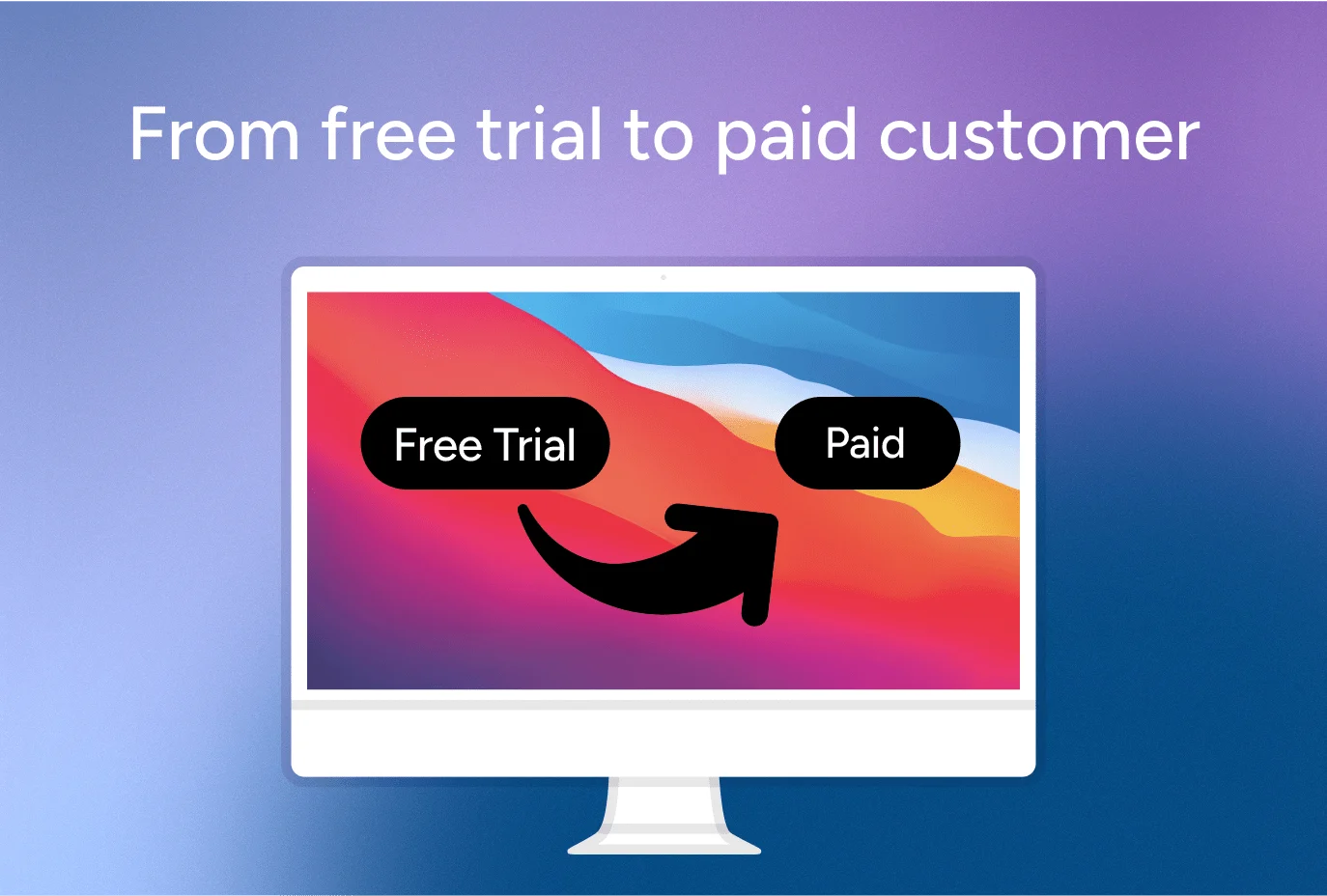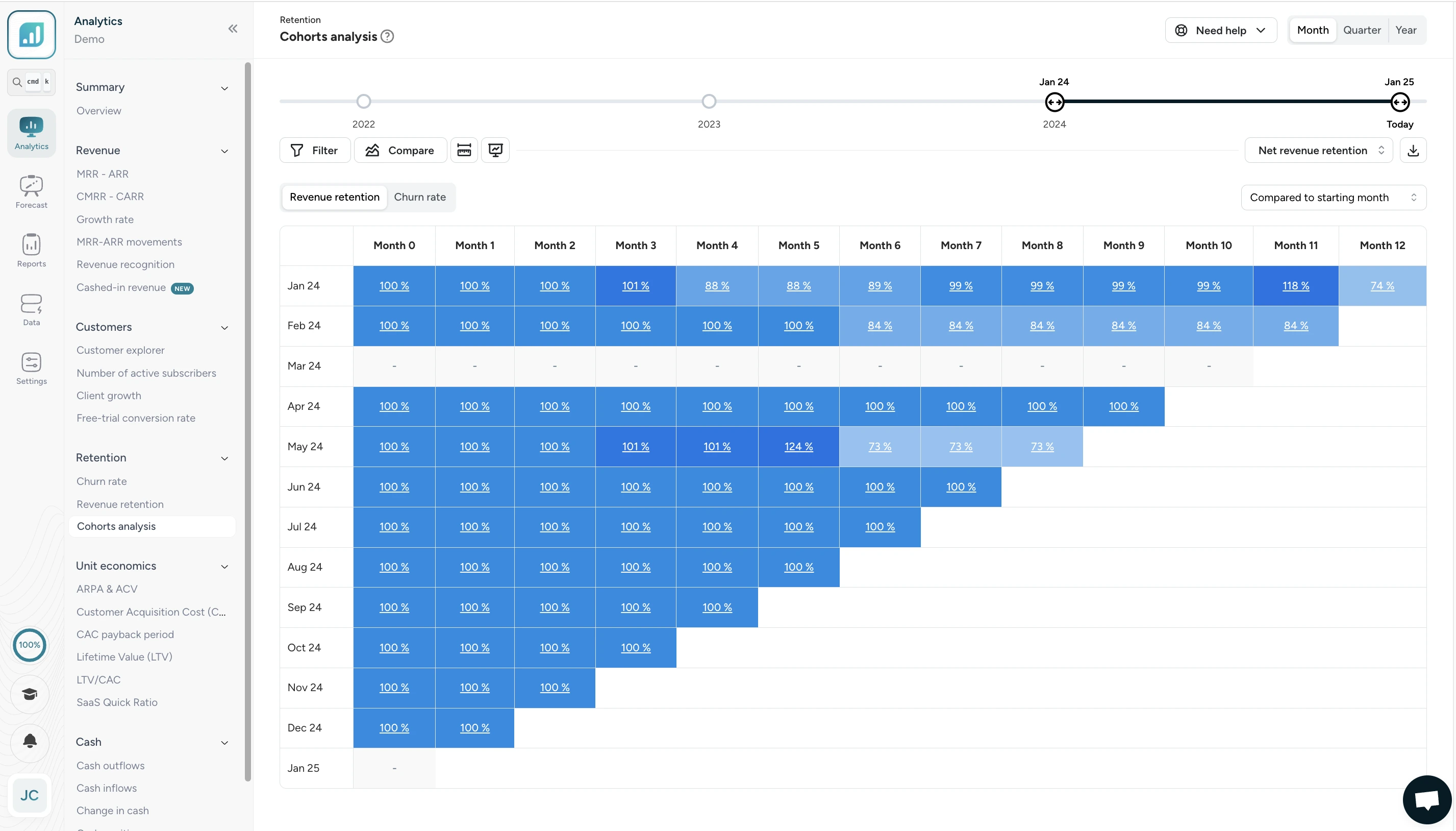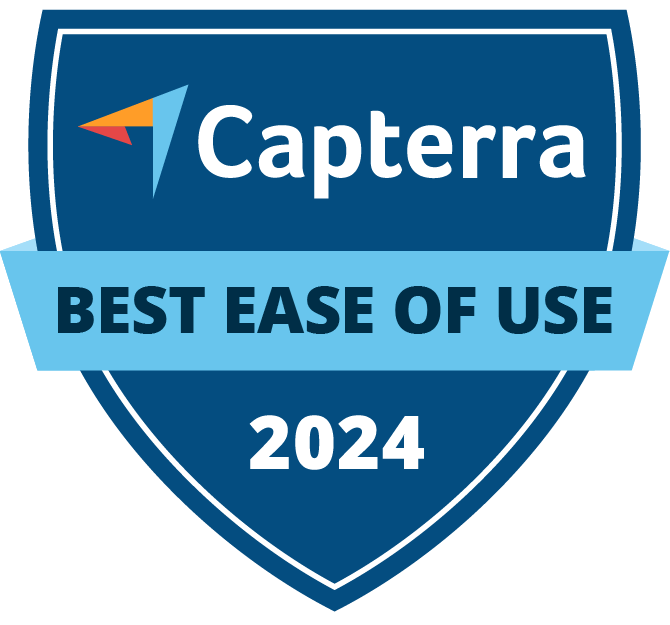From free trial to paid customer: boosting LTV in SaaS with conversion optimization


Free trials are a proven acquisition lever in SaaS, but they only create value when they convert. A well‑designed free trial does more than generate short‑term bookings: it improves Customer Lifetime Value (LTV), shortens CAC payback, and strengthens the predictability of cash flows. This article gives founders, CFOs, and finance leaders a practical playbook for free trial conversion in SaaS—linking product‑led tactics with financial outcomes. You’ll find the essential metrics to track (trial‑to‑paid conversion rate, TTV, churn, NRR), realistic benchmarks, and a concise set of tactics to remove friction, accelerate Time to Value (TTV), and guide users toward purchase.
Why free trial conversion is core to SaaS LTV
Trial-to-paid conversion is the first determinant of LTV: a trial that never converts yields zero lifetime value. Improving conversion increases the volume of paying accounts entering your revenue base; retention and expansion then compound that value over time.

Three ideas to anchor strategy:
- Value drives conversion. Users are most likely to pay immediately after experiencing a concrete outcome. The shorter the TTV, the higher the conversion probability during the same trial window.
- Retention starts before the paywall. If users do not understand the product during the trial, early‑life churn will be high even among those who pay. Treat trial activation as the first phase of retention.
- Unit economics depend on conversion. Better trial conversion lowers effective CAC per paying customer and shortens payback, improving cash discipline without increasing spend.
Benchmarks: Many B2B SaaS businesses convert ~15–25% of opt‑in trials. Products with crisp onboarding and clear outcomes often reach 30%+. If you require a credit card (opt‑out), conversion rates typically rise but top‑of‑funnel volume drops. Choose the model that fits your audience and sales motion.
Key metrics to track during free trials
Keep a short, finance‑grade metrics set so marketing, product, sales, and finance read the same scoreboard.
Trial‑to‑Paid Conversion Rate
Paid Conversions ÷ Trial Sign‑ups × 100 Track by cohort (start month), acquisition source, and persona. Use this as the primary success metric for the trial funnel.
Time to Value (TTV)
Time from signup to the first meaningful outcome (your "aha" moment). Instrument the specific activation events that signal value (e.g., first report sent, first integration completed, first team invite). Shorter TTV correlates with higher conversion and lower early churn.
Activation Rate
Share of trial users who complete the defined activation events. Investigate drop‑offs step by step to remove friction.
Customer Acquisition Cost (CAC) & Payback
CAC is the all‑in sales & marketing cost per new customer. Payback ≈ CAC ÷ ARPA (or Gross Profit ARPA). Faster conversion generally compresses payback.
Churn & Retention (D0–D90 focus)
Monitor the first 30–90 days after conversion. Early churn implies gaps in onboarding or expectation‑setting. Report logo churn and gross revenue churn.
Net Revenue Retention (NRR) (Starting MRR + Expansion – Contraction – Churn) ÷ Starting MRR. High‑quality trial conversions show stronger NRR over time because activation during trial sets the stage for adoption and upsell.
{{discover}}
Proven tactics to optimize free trial conversion
Below are five levers that consistently move conversion. Use them as a checklist; instrument each change so you can attribute impact.
Frictionless onboarding
Goal: get users to the activation event with minimum effort.
- Replace long tours with contextual guidance (tooltips, hotspots) revealed when users reach a relevant screen.
- Show a checklist of 3–5 actions tied to outcomes ("Import data", "Invite a teammate", "Publish first dashboard").
- Pre‑load sample data or pre‑configured templates to avoid empty states.
- Reduce form fields at signup; allow SSO/OAuth to start faster.
Experience across SaaS products suggests that trimming the tour, using a concise four-step checklist, and seeding sample data materially reduces early abandonment and lifts activation.
Deliver Time to Value fast
Goal: ensure users experience value within the first session or first 48 hours.
- Identify the smallest action that proves value (e.g., “first automated report sent to the team”).
- Design the first‑run path around that action; defer advanced setup.
- Use nudge emails and in‑app prompts in the first 24–72 hours to drive the remaining checklist items.
Example: Collaboration tools often observe that teams who send a first message or invite a colleague within day one have materially higher conversion. Optimize the UX to make that action unavoidable (in a helpful way).
Support channels that convert
Goal: remove uncertainty and accelerate decisions.
- Offer live chat in‑app during the trial; set service levels for high‑intent users.
- Provide office hours or short onboarding calls for larger prospects.
- Trigger help content contextually (short videos, articles) rather than linking to a generic knowledge base.
This isn’t about heavy headcount: even modest, well‑timed human assistance can rescue stuck trials and reduce "evaluation fatigue".
Trigger‑based pricing prompts & upsells
Goal: surface the right buying nudge at the right moment.
- Show upgrade prompts at usage limits (projects, seats, API calls) and when users touch premium features.
- Detect power users (login frequency, feature breadth) and route to sales for a consultative close.
- Close to expiry, offer a time‑boxed incentive (e.g., first month free or a discount for annual) to convert undecided users.
Keep pricing pages and plan comparisons simple. Recommend a plan based on observed usage to reduce choice friction.
Strategic trial length
Goal: align duration with your TTV and buyer motion.
- If value is clear within a day, a 7–14‑day trial keeps urgency high.
- If setup is non‑trivial or requires stakeholder buy‑in, 21–30 days may be warranted.
- Offer a one‑time extension for engaged users who need more time; avoid blanket long trials.
Instrument conversion by trial length and TTV to choose the optimal default.
Using cohort analysis to identify conversion levers
Cohort analysis replaces guesswork with evidence. Group trials by start month, acquisition channel, persona, or trial length and track:
- Activation rates over the first 7–14 days.
- Conversion curves (cumulative % converted by day).
- Post‑conversion retention (D30/D60 churn) and NRR at 3–6 months.

Patterns to look for:
- Channels with low sign‑up volume but high conversion (often content, referrals, or webinars). Reallocate budget accordingly.
- Personas or plans with shorter TTV and higher LTV; tailor onboarding by segment.
- The point in the trial where conversions plateau; align expiry and incentive timing to that curve.
Retention starts at conversion: driving long‑term value
A conversion is the start of the revenue story. Safeguard LTV with early‑life retention and expansion.
Continue onboarding post‑purchase. Convert your trial checklist into a “first 30 days” plan. Expose sticky features and advanced workflows gradually. Celebrate first wins.
Monitor health and intervene early. Track login frequency, feature breadth, and support signals during the first 60–90 days. Low engagement is a churn predictor; offer help before dissatisfaction sets in.
Enable expansion. Design pricing and packaging so customers can grow naturally (seats, usage tiers, add‑ons). Educate customers about value paths to higher tiers using in‑app tips and customer stories.
Use annual plans and prepayments wisely. Annual commitments improve retention and cash predictability via deferred revenue. Offer them as a value exchange (discount, onboarding package), not as pressure. Read more: Deferred Revenue in SaaS.
The result you’re after is compounding value: solid gross retention plus meaningful expansion, reflected in a healthy NRR.
Conclusion
Improving free trial conversion is one of the most direct, capital‑efficient ways to grow a SaaS business. It increases the number of customers entering your revenue base, shortens CAC payback, and lays the groundwork for strong retention and expansion. The practical path is clear: design onboarding around a single activation goal, compress Time to Value, support users when they get stuck, time pricing prompts to moments of need, and right‑size your trial duration to your buyer motion. Use cohort analysis to decide what to fix next, and measure changes with the same discipline you apply to P&L management.
Finance and product must share one scoreboard. With Fincome, you can unify trial, usage, and billing data; monitor conversion and retention by cohort; and quantify the LTV and ARR impact of each experiment. That alignment turns a “good” free trial into a reliable engine for SaaS LTV optimization, making growth more predictable for your team and more persuasive for your board.
{{newsletter}}


Discover Fincome!

Frequently Asked Questions
Expense Tracking:
Fincome is a SaaS revenue management platform designed specifically for companies with recurring revenue models (any business selling subscriptions).
Fincome automates the tracking and management of your revenues and associated KPIs (churn, LTV, CAC, etc.) in real time, without the need for a data team or manual processing, thanks to direct integrations with your billing systems and ERP.
Unlike generic BI tools, Fincome offers a turnkey, intuitive solution tailored to the specific needs of subscription-based businesses, enabling seamless collaboration across your finance, GTM, and CSM teams.
Fincome is built exclusively for companies with recurring revenue models, meaning those that track MRR or ARR, such as:
• Software publishers (SaaS)
• Media companies
• Mobile apps
• Any other B2B or B2C subscription business looking to professionalize revenue management
Fincome supports organizations at every stage of growth, from startups to mid-market and large international enterprises.
With Fincome, you gain access to a full suite of modules:
✅ Revenue: detailed ARR/MRR breakdown, cohort analysis, detection of billing errors or omissions, revenue recognition and deferred revenue (PCA)
✅ Growth: analysis of ARR movements (new business, expansion, churn, reactivation), identification of growth drivers
✅ Unit Economics: LTV, CAC, and LTV/CAC analysis by segment, channel, or geography to optimize margins
✅ Retention: deep cohort analyses, identification of key retention drivers
✅ Renewals: future MRR projections, opportunity forecasting, and churn risk reduction
✅ Forecasting: revenue growth scenario modeling to better inform strategic decisions
Fincome is the only turnkey platform built specifically for recurring revenue businesses that combines:
✅ A complete, reliable view of your recurring revenues (MRR, ARR, churn, LTV, CAC, cohorts, renewals, revenue recognition, deferred revenue)
✅ Fully customizable, automated, shareable reports powered by AI, delivering actionable insights to guide your strategic decisions
✅ Expert support to help structure and interpret your analyses, without needing to build an internal data team
✅ The ability to generate future growth scenarios, compare them side by side, and track actual vs. forecasted performance, all in real time
Unlike traditional BI tools, which require you to build and maintain your own metrics (often consuming internal resources just to produce static data visualizations), Fincome transforms your SaaS metrics into concrete, actionable recommendations — helping you move faster, with more impact and operational efficiency.
Yes! If you use an unlisted or in-house billing system, no problem — you can easily import your billing data via Excel or push it through our public API. You can access our public API documentation here.
With Fincome, you can:
✅ Reduce up to 90% of the time spent calculating and reporting your KPIs
✅ Make faster, more accurate strategic decisions
✅ Recover up to 5% of lost revenue by detecting errors or omissions
✅ Cut the risk of manual spreadsheet errors by 80%
Absolutely. Data security is at the heart of what we do. Fincome is SOC 2 Type I certified, ensuring a high level of data security and protection.
Your data is collected exclusively via read-only APIs and hosted on secure servers located in France. We never share your data with third parties without your consent.
For a detailed review of our security practices, please visit our dedicated security page.
At Fincome, customer success is a core priority. We guide you from the very start — structuring your data, training your teams, and optimizing your use of the platform to deliver value quickly.
Our team remains by your side to answer strategic or technical questions, share best practices, and help you get the most out of your analyses.
Simply request a demo on our website. We’ll walk you through the platform, assess your needs, and guide you through a smooth deployment.
Most deployments and team trainings take no more than two weeks to get fully up and running.
👉 Request a demo
Income Analytics:
Lorem ipsum dolor sit amet consectetur adipiscing elit etiam vehicula. Etiam vehicula condimentum nunc, a semper elit luctus id. Duis fringilla enim non neque aliquet.
Lorem ipsum dolor sit amet consectetur adipiscing elit etiam vehicula. Etiam vehicula condimentum nunc, a semper elit luctus id. Duis fringilla enim non neque aliquet.
Lorem ipsum dolor sit amet consectetur adipiscing elit etiam vehicula. Etiam vehicula condimentum nunc, a semper elit luctus id. Duis fringilla enim non neque aliquet.
Budget Management:
Lorem ipsum dolor sit amet consectetur adipiscing elit etiam vehicula. Etiam vehicula condimentum nunc, a semper elit luctus id. Duis fringilla enim non neque aliquet.
Lorem ipsum dolor sit amet consectetur adipiscing elit etiam vehicula. Etiam vehicula condimentum nunc, a semper elit luctus id. Duis fringilla enim non neque aliquet.
Lorem ipsum dolor sit amet consectetur adipiscing elit etiam vehicula. Etiam vehicula condimentum nunc, a semper elit luctus id. Duis fringilla enim non neque aliquet.
Wealth Management:
Lorem ipsum dolor sit amet consectetur adipiscing elit etiam vehicula. Etiam vehicula condimentum nunc, a semper elit luctus id. Duis fringilla enim non neque aliquet.
Lorem ipsum dolor sit amet consectetur adipiscing elit etiam vehicula. Etiam vehicula condimentum nunc, a semper elit luctus id. Duis fringilla enim non neque aliquet.
Lorem ipsum dolor sit amet consectetur adipiscing elit etiam vehicula. Etiam vehicula condimentum nunc, a semper elit luctus id. Duis fringilla enim non neque aliquet.






